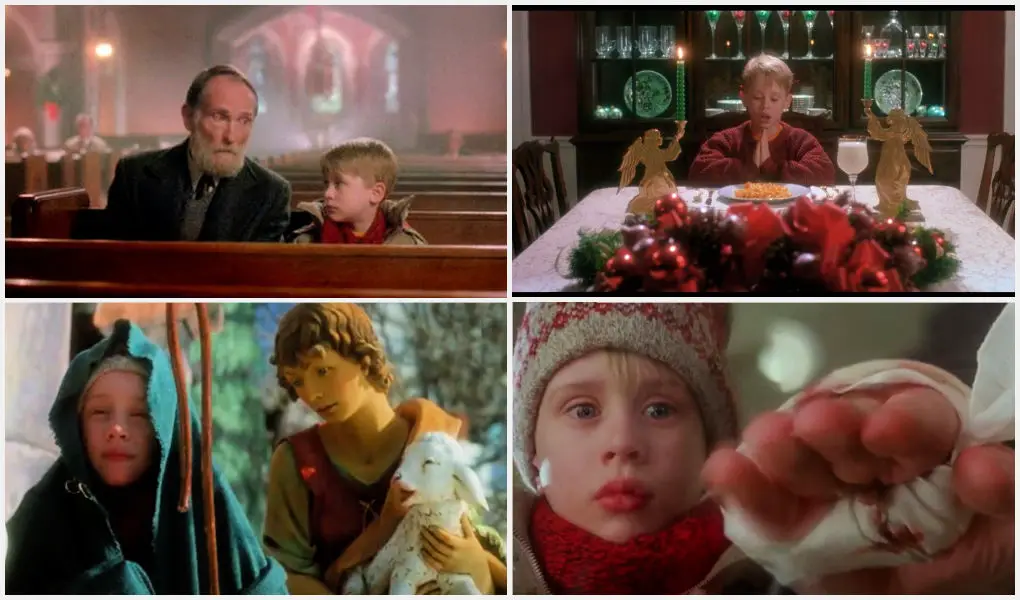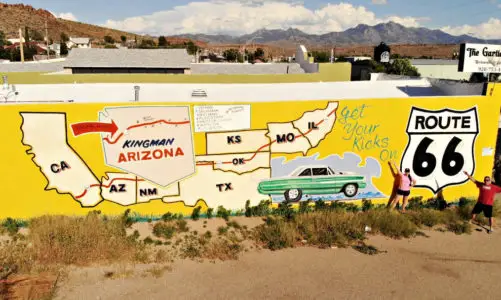Released in 1990, “Home Alone” stands as a timeless family comedy written by John Hughes, renowned for his religious and conservative convictions. Intriguingly, Hughes subtly wove religious messages into all his works, including the enduring classic “The Breakfast Club.” Skillfully blending elements of faith, morality, and family values into his storytelling, “Home Alone” became a massive success and remains a beloved holiday classic.
The mainstream narrative of “Home Alone” describes it as a misadventure of Kevin McCallister, played by Macaulay Culkin, who is accidentally left behind when his family goes on Christmas vacation and must defend his home against burglars using creative and humorous booby traps—combining elements of slapstick comedy with heartwarming moments. Additionally, the movie explores themes of family, independence, and the spirit of Christmas.
Fans of nostalgic comedy might also enjoy exploring a collection of classic family comedies for more lighthearted films from the same era, including this rarely discussed John Hughes road-trip comedy that blends heart, humor, and Hughes’ signature themes of family and redemption.
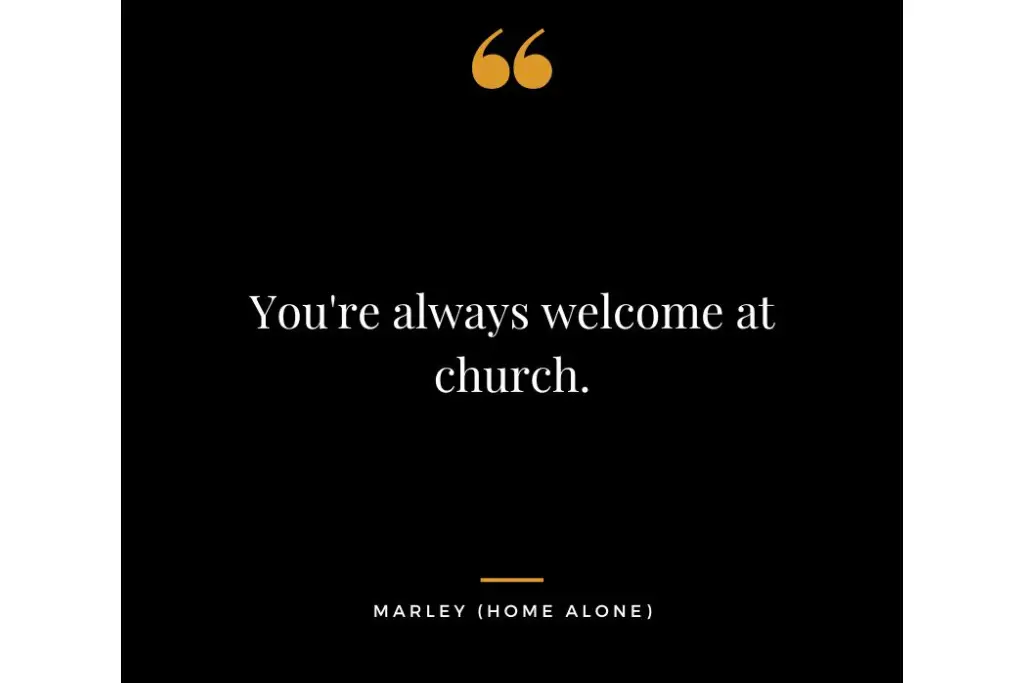
For readers wanting to revisit this holiday gem, Home Alone: 25th Anniversary Ultimate Collector’s Edition [Blu-ray] comes in a unique paint can packaging and offers a great way to enjoy the film in high quality, as Blu-ray provides superior video and audio with higher bit rates and lossless audio formats, ensuring a more detailed and consistent viewing experience without the reliance on internet speed.
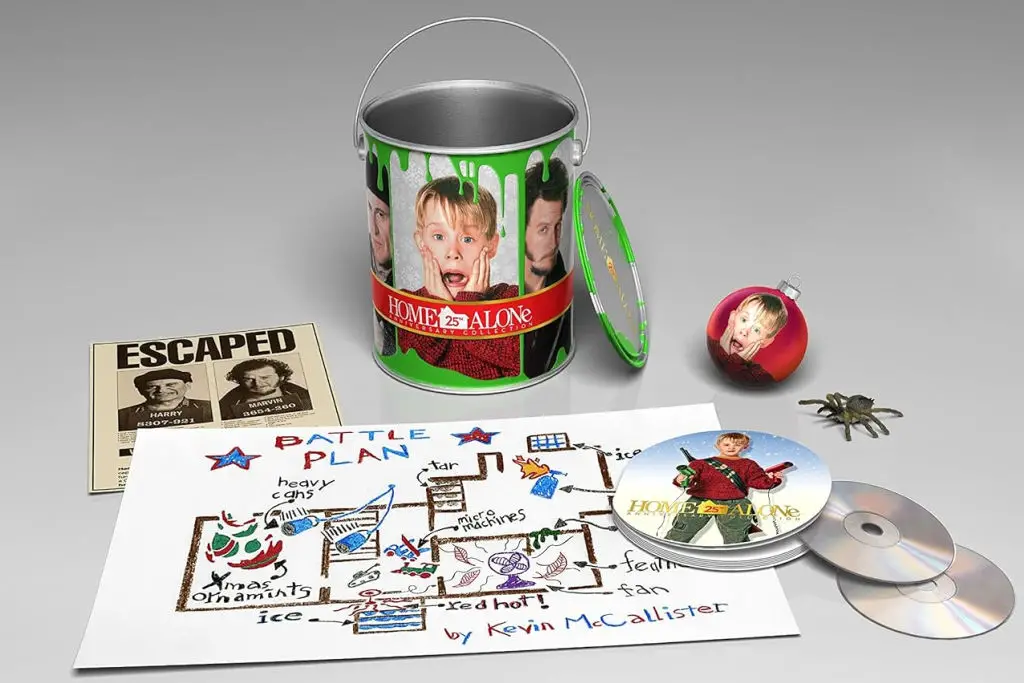
😱🏠 25th Anniversary “Home Alone” Ultimate Collector’s Edition > Buy Now
Yet, the inclusion of religious themes that explore concepts like forgiveness and redemption is frequently underestimated in “Home Alone.” For film enthusiasts, these elements bring depth to the story and connect with viewers on a deeper spiritual level. If you’re interested in exploring other faith-based holiday films, check out “The Nativity Story” for a powerful cinematic retelling of the birth of Christ.
Travel Movie Rooted in Faith
Though “Home Alone” is widely recognized as a holiday comedy, it could be viewed as a Christian faith-based travel movie that takes an unexpected turn. In nearly every scene, various Christian themes enhance the storyline, adding a more profound layer of significance.
The idea of traveling, being lost, and the eventual reunion ties in deeply with Christian motifs. For those interested in delving into Christian teachings on forgiveness, “The Return of the Prodigal Son: A Story of Homecoming” offers insightful perspectives on the themes explored in the movie.
Family and Home
The film emphasizes the significance of family and the concept of home. Despite initial chaos, Kevin’s ultimate goal as he embarks on a journey of faith is to reunite with his family, highlighting the importance of familial bonds and a sense of belonging. To enhance your own home decor with a nod to “Home Alone,” consider adding Home Alone Christmas Tree Ornaments to your holiday setup.
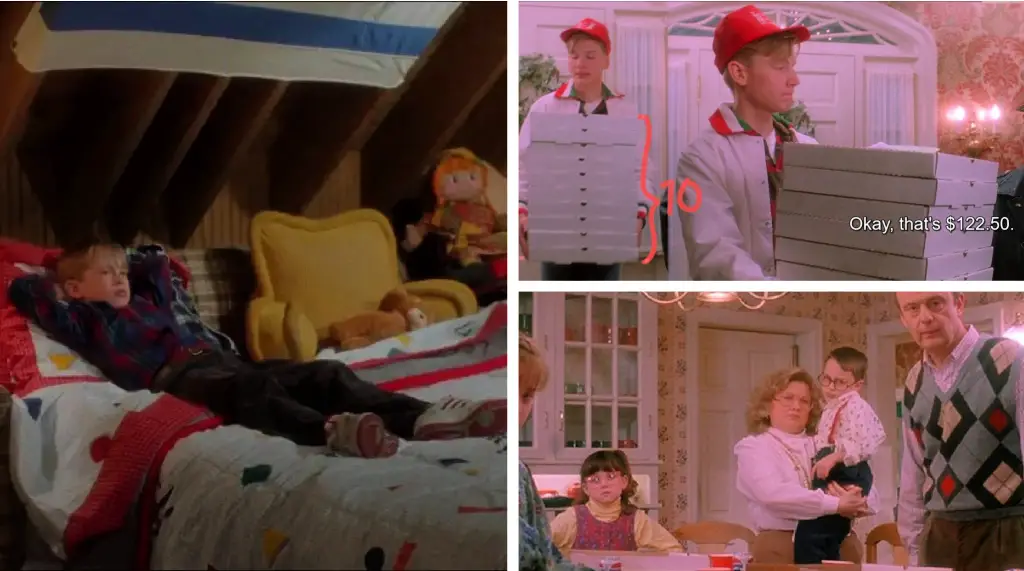
The number 13 is traditionally associated with the twelve disciples of Jesus Christ and Jesus himself, but attributing specific characters in “Home Alone” to these roles may be a stretch. Nevertheless, Kevin serves as a Jesus allegory, a narrative that delves into themes beyond Christmas, extending to Easter.
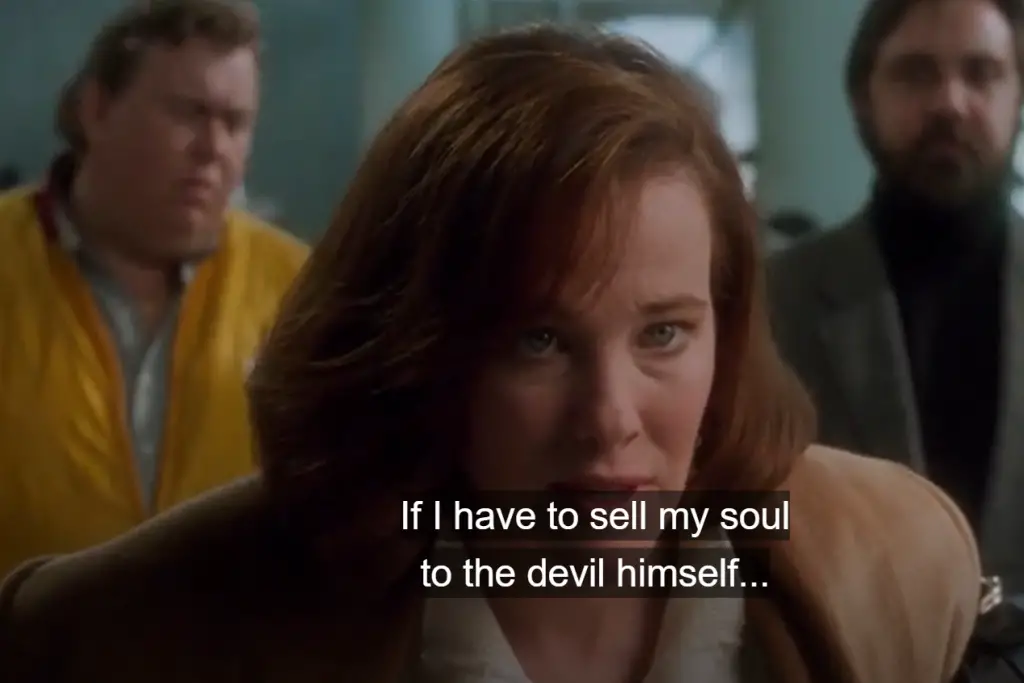
Kevin’s mother goes on a Marian journey where there is no room in the inn (the flight). Eventually, she meets Gus (the Holy Ghost) who gracefully intervenes to help Kevin’s mom moments after she says she would sell her soul to the devil to save her son. Watch Gus’ (John Candy) face when he hears her say “devil.”
Kevin Realizes the Significance of Family
In “Home Alone,” Kevin McCallister doesn’t explicitly pray for his family’s return in the traditional manner. Instead, there’s a scene where Kevin, following time spent in a church and a meaningful encounter with Old Man Marley, contemplates his loneliness and yearning for his family’s presence. It’s a touching moment where Kevin expresses his deep desire for the warmth and love of his family amid the Christmas season.
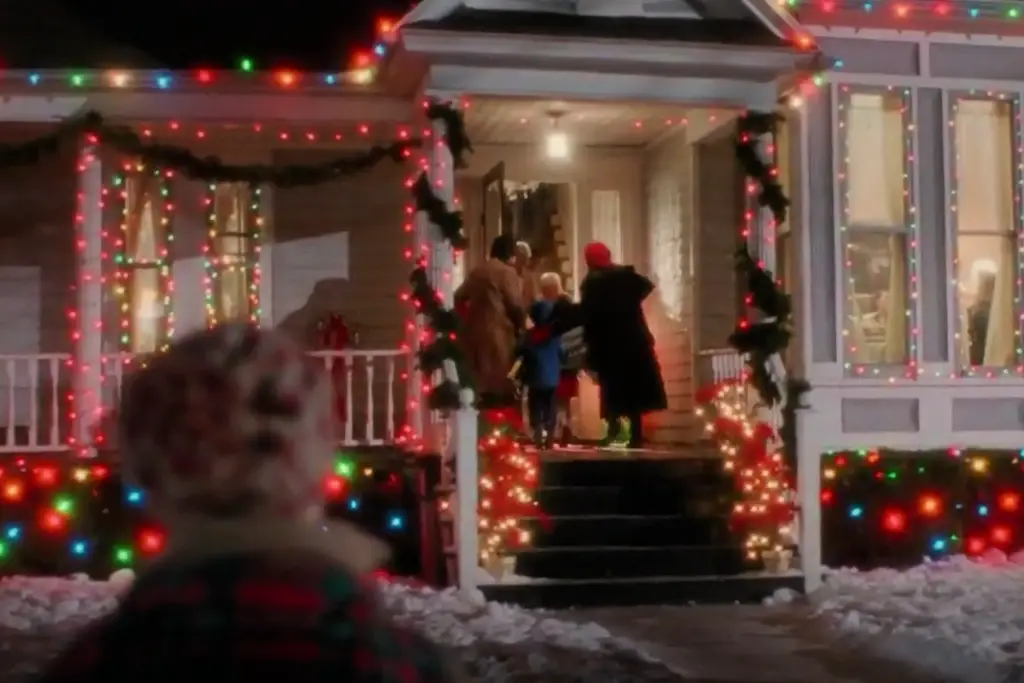
While the scene doesn’t involve a formal prayer, it captures the emotional and spiritual dimensions of Kevin’s journey in the film, highlighting his personal growth and realization of the significance of family. The movie utilizes these moments to convey a message of forgiveness, reconciliation, and the importance of familial bonds during the holiday season.
The Prodigal Son Parable
Kevin’s journey mirrors elements of the biblical prodigal son parable. After relishing his initial freedom, he experiences a yearning for family. Old Man Marley’s retelling of the prodigal son story adds a layer of depth to Kevin’s narrative.
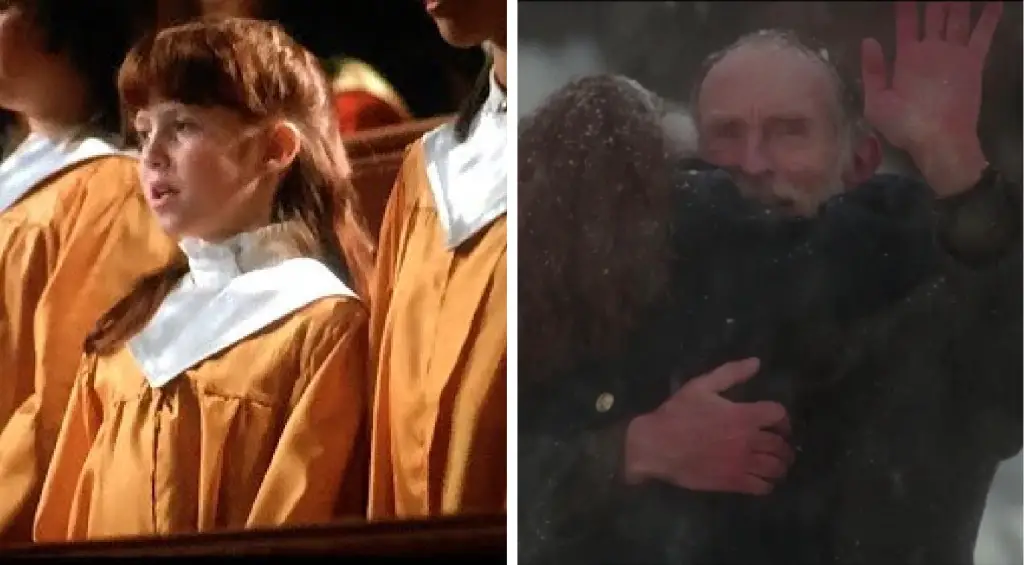
LEGO “Home Alone” McCallisters’ House
Attention, mature kids and adults—this “Home Alone” House LEGO Set is your ultimate movie collectible gift! With 3,957 pieces, you’ll build Kevin’s chaotic holiday home complete with iconic features like swinging paint cans, a zip line, and the spooky furnace. This set includes 5 minifigures—Kevin, his mom, crooks Harry and Marv, and neighbor Old Man Marley—perfect for recreating all the hilarious scenes. It’s the ultimate festive build for fans of the classic holiday movie!
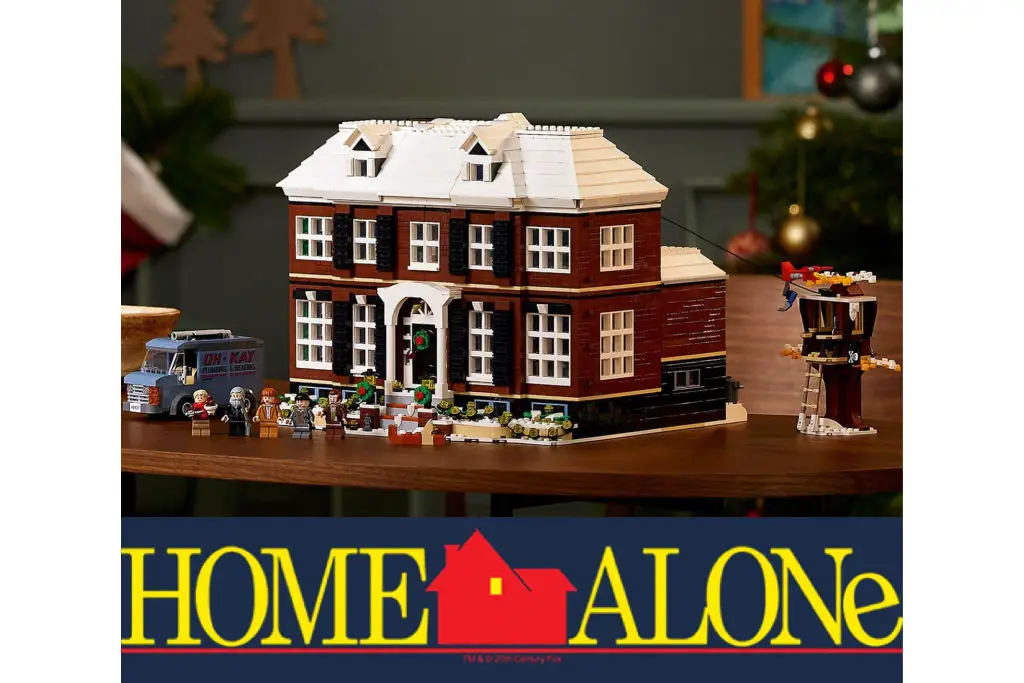
Good vs. Evil
At the movie’s beginning, Kevin resides in a non-praying household and makes a misguided wish to Santa (considered an idol) for his family’s disappearance. After Kevin’s mom suggests, “Why don’t you ask Santa for a new family,” he makes the wish, and an ominous Santa wreath appears.
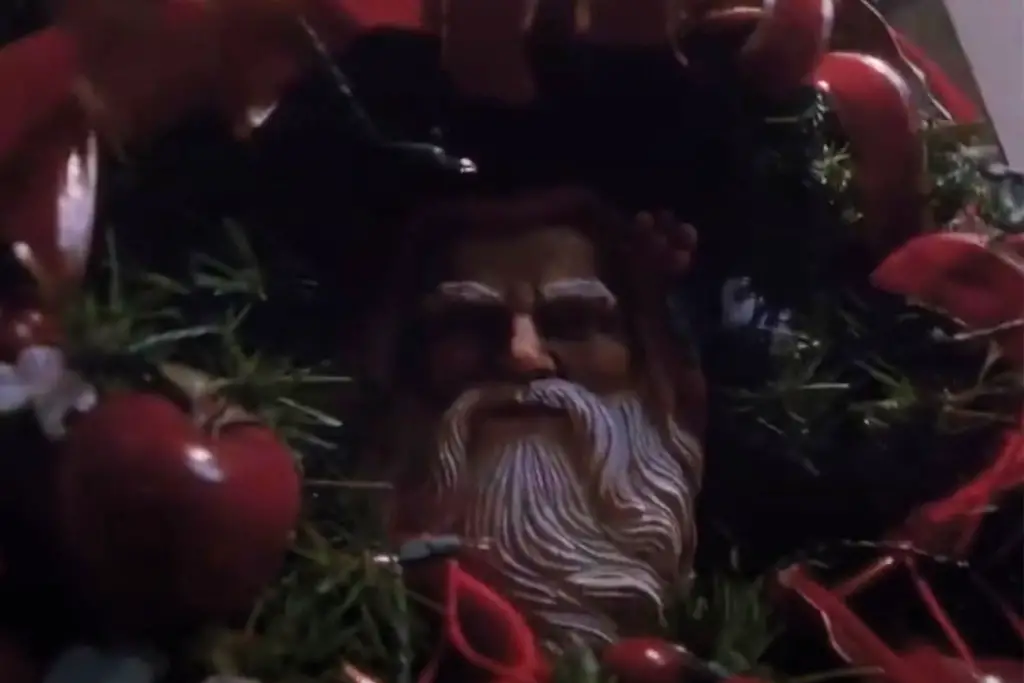
The climactic clash between Kevin and the burglars symbolizes the timeless struggle between good and evil. Kevin’s defense of his home serves as a metaphor for the triumph of goodness over wrongdoing.
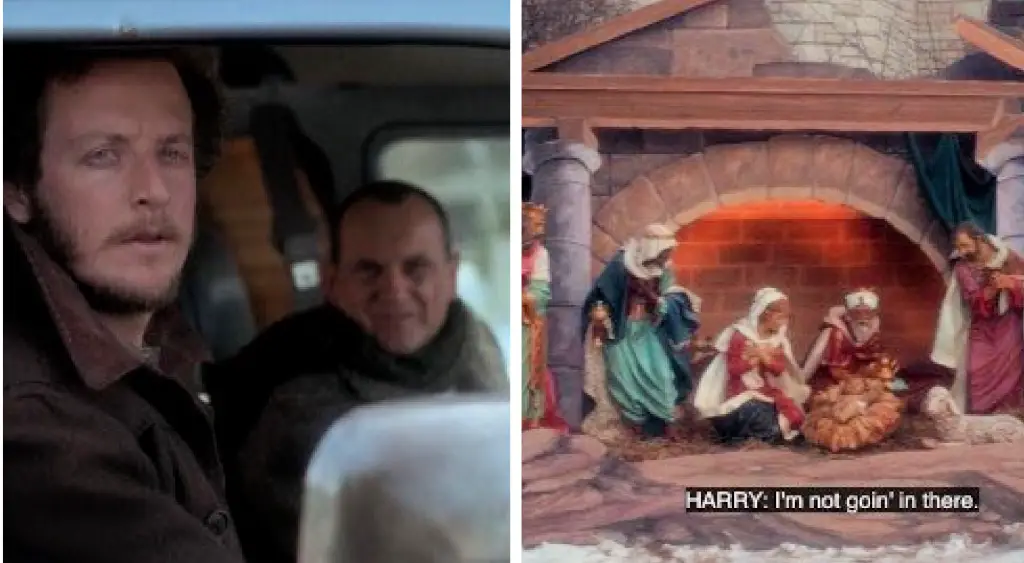
The scene where Harry and Marv, the burglars, hesitate to enter the church is not explicitly explained in the movie. However, one interpretation could be that the church, as a place of worship, represents a moral or spiritual sanctuary.
Also, they may feel a sense of reluctance or discomfort about intruding on sacred ground. The church, in this context, could be seen as a symbolic barrier against their immoral intentions.
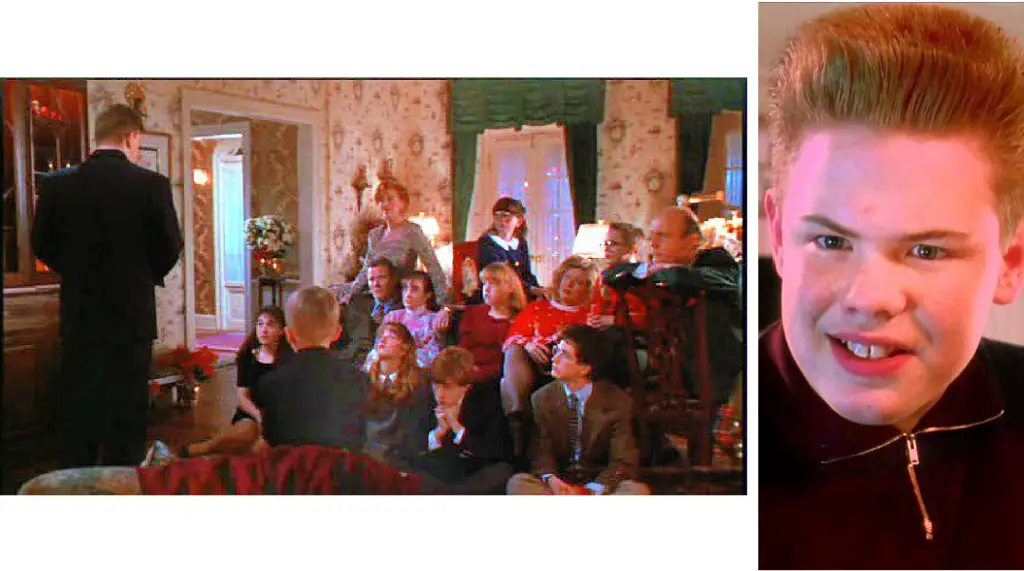
Initially reveling in the solitude, Kevin soon longs for the warmth of his family’s love. Seeking help, he approaches a Santa impersonator only to realize the futility of turning to a false god. He eventually realizes that this Santa is just a regular person and not a deity who can help him. This can be seen as a humorous twist in the story, emphasizing that relying on a figure like Santa for solutions may not be the answer.
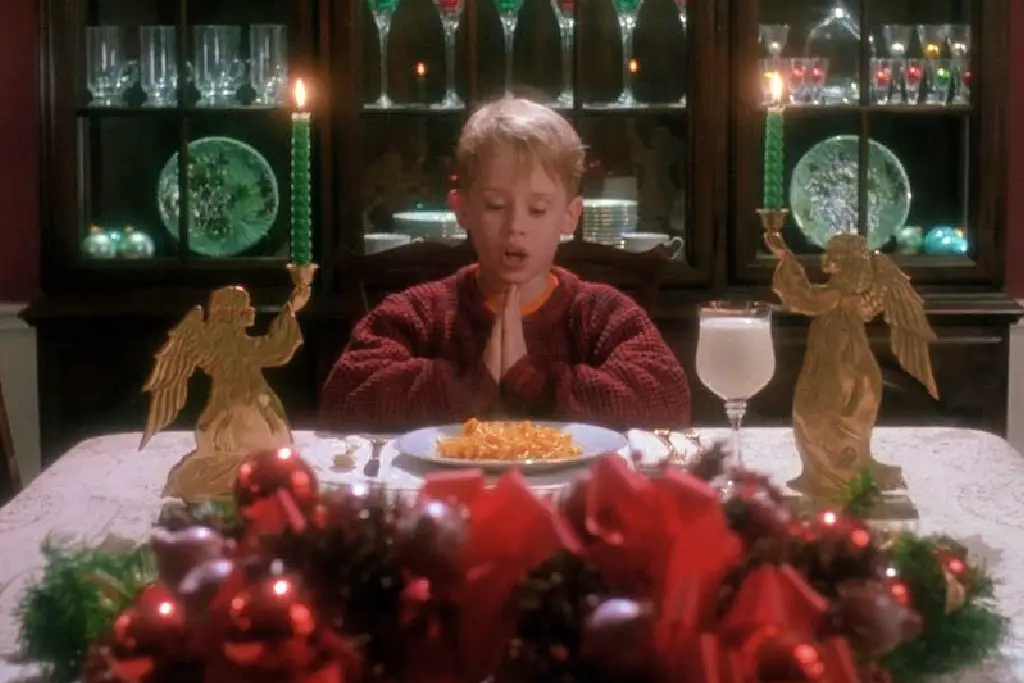
Before putting on the full armor of God, to stand against the devil’s schemes Kevin prays before his meal, indicating that he’s now defending a Christian household.
14 Obstacles – Stations of the Cross
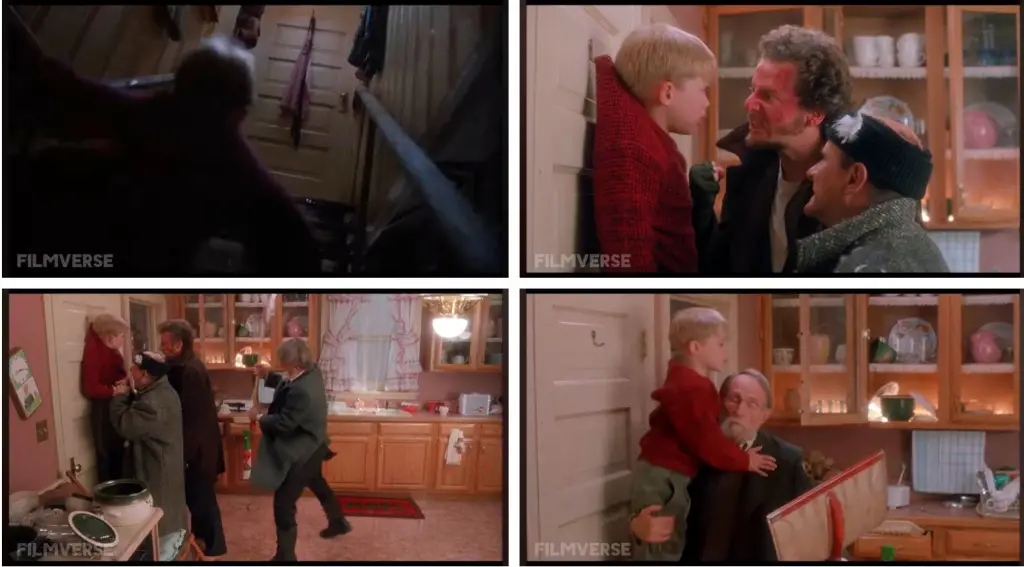
Kevin completes 14 obstacles which represent the 14 Stations of the Cross but is eventually forced to climb a hill where is judged by the Italian cop played by Harry (Pontius Pilate) and a Jewish guy (Judas) played by Marv when hung on a wooden door. At this moment the father figure appears from nowhere, conquers his enemies, saves Kevin, and returns him home.
The 14 obstacles are listed below:
- Pellet gun
- Ice near doors
- Iron falling
- Hot door handle
- Tar and nail on stairs
- Flame on head
- Glue and feathers
- Stepping on ornaments
- Falling on toy cars
- Paint cans
- Trip line in the hallway
- Tarantula
- Cutting the zipline
- Hung on a door
Prayer and Faith
We first encounter Mr. Marley as he disperses salt on the ground, embodying the metaphor of Christians being the salt of the earth. Yes, the phrase “salt of the earth” has biblical origins and is associated with Christian teachings. Moreover, the expression is found in the New Testament in the Gospel of Matthew 5:13, where Jesus says to his disciples:
You are the salt of the earth, but if salt has lost its taste, how shall its saltiness be restored? It is no longer good for anything except to be thrown out and trampled under people’s feet.
This metaphorical language suggests that, like salt enhances and preserves food, followers of Jesus (Christians) are meant to have a positive and preserving influence on the world. Additionally, Christians are encouraged to bring goodness, righteousness, and a positive impact to the societies and communities they are part of. Also, the metaphor emphasizes the importance of living out one’s faith in a way that positively influences the world around them.
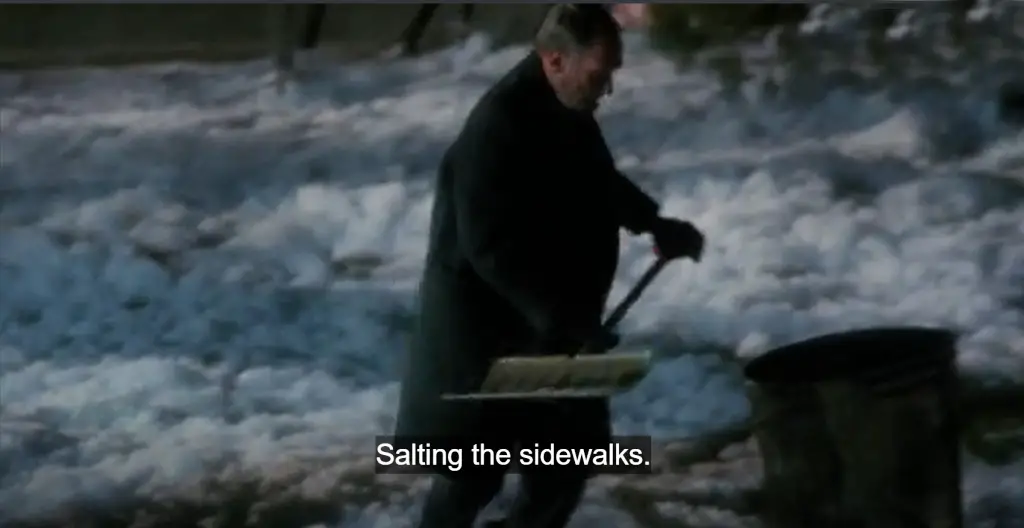
Kevin’s visit to the church and his interaction with Old Man Marley incorporate elements of prayer and faith. In short, the church becomes a sanctuary for Kevin, and his transformed demeanor suggests a spiritual awakening. Furthermore, by the end of the movie, Kevin finds solace and guidance in the church.
Church Becomes Kevin’s Sanctuary
It’s worth checking out the script where Marley spends four pages talking in church. For instance, it discusses how he looks forward to reuniting with his wife in heaven and telling Kevin to pray.
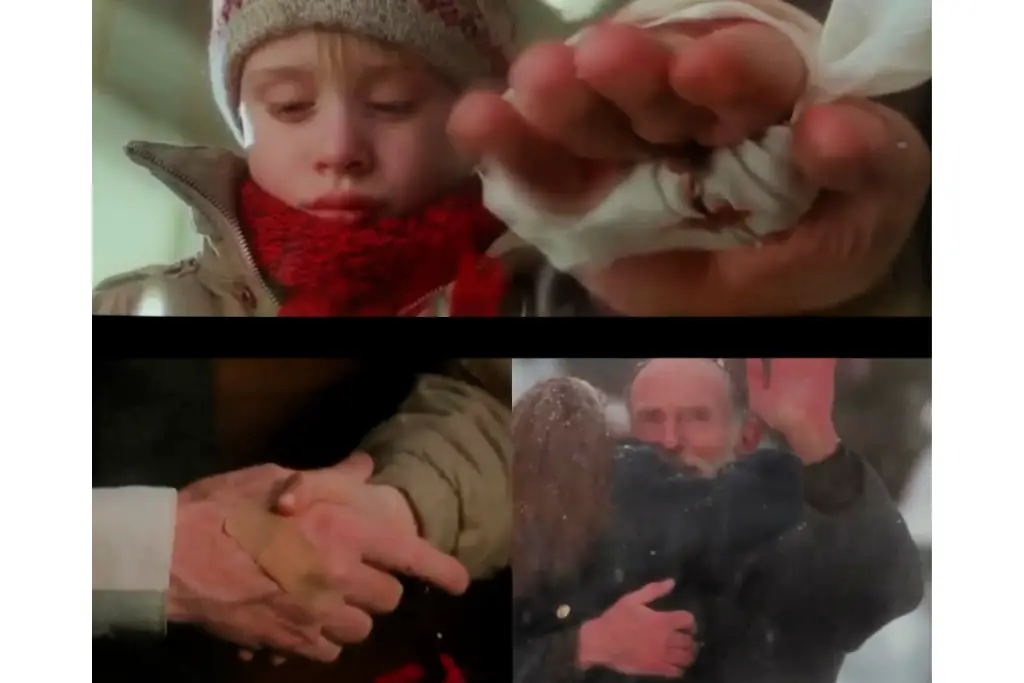
It’s easy to see the connections between Old Man Marley’s narrative and the Christian story, especially that of Jesus Christ. For example, the injuries on Marley’s hands are interpreted as symbolic allusions to the wounds on Jesus’ hands. Notably, those from the crucifixion.
Redemption and Forgiveness
Old Man Marley’s character arc exemplifies themes of redemption and forgiveness. Initially depicted as mysterious and potentially frightening, Marley’s reconciliation with his estranged son showcases the transformative power of forgiveness.
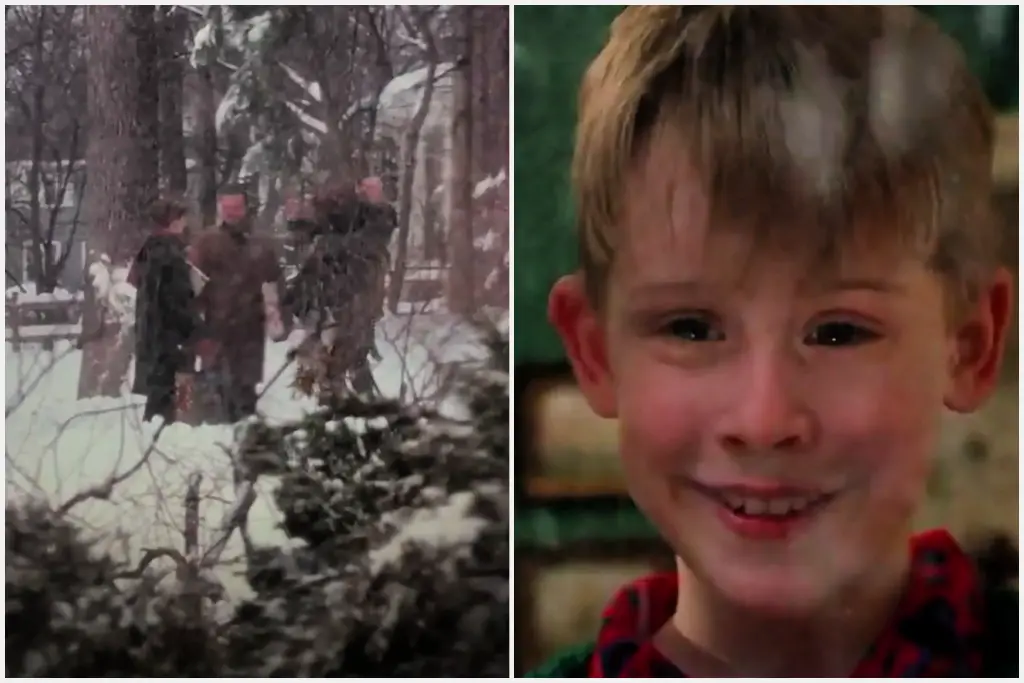
His victory extends beyond thwarting the robbers; Kevin triumphs over his own sinful nature. On the third day, Kevin prays not for himself but for the salvation and return of his family.
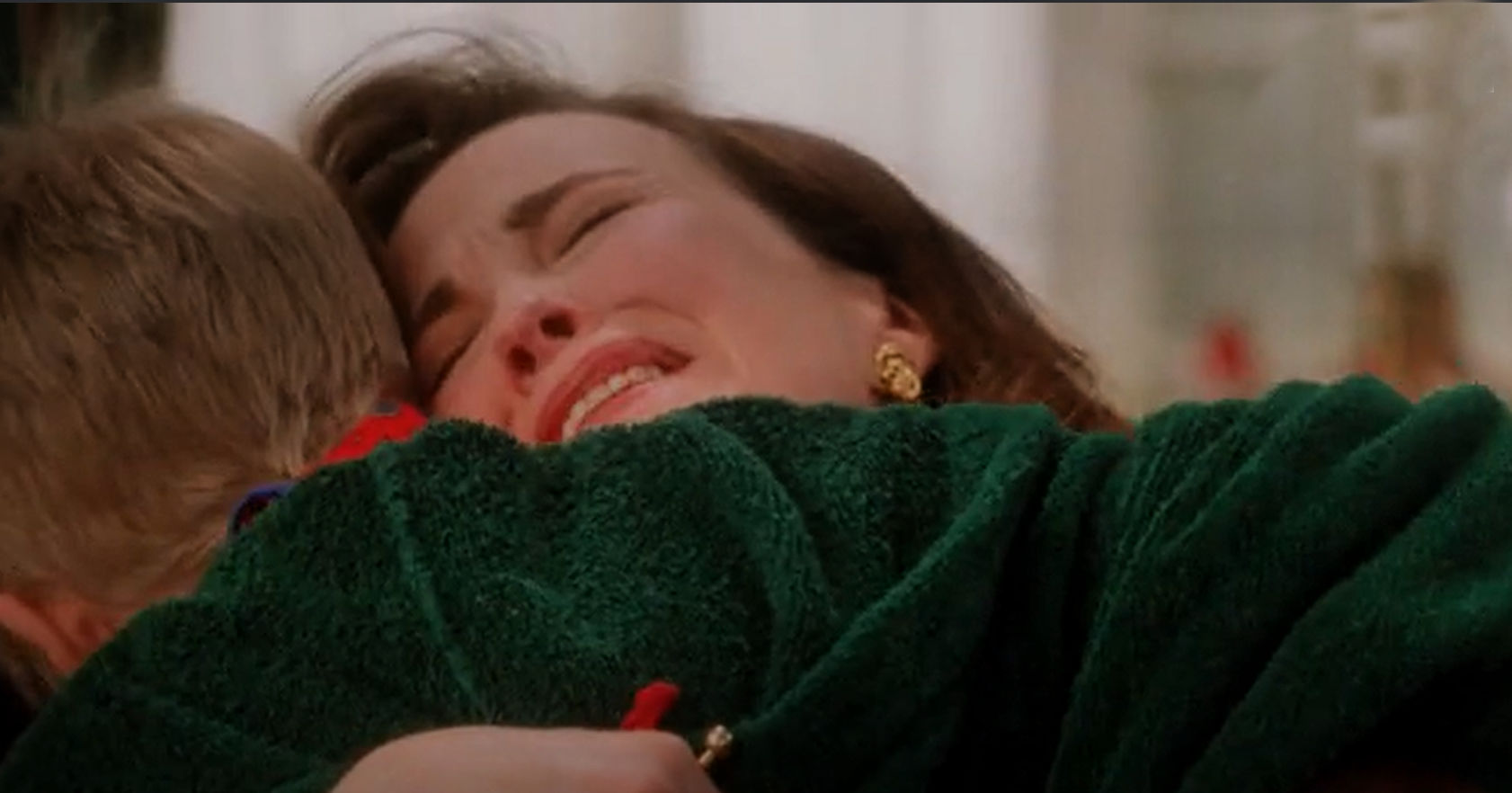
The mother, who endured solitary and futile suffering in her attempts to save her son, experiences a miraculous and emotional reunion with him, alongside the other twelve, just when all hope appears to be lost. Finally, through this conquest, Kevin reunites with his family, experiencing the true essence of Christmas.
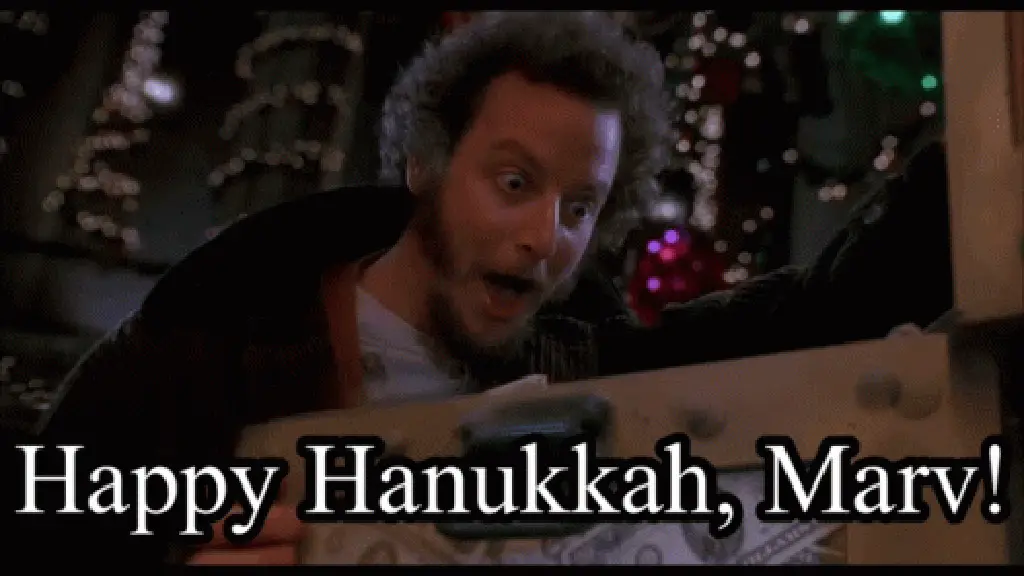
As many suspected, in “Home Alone 2,” it’s confirmed that Marv is Jewish.
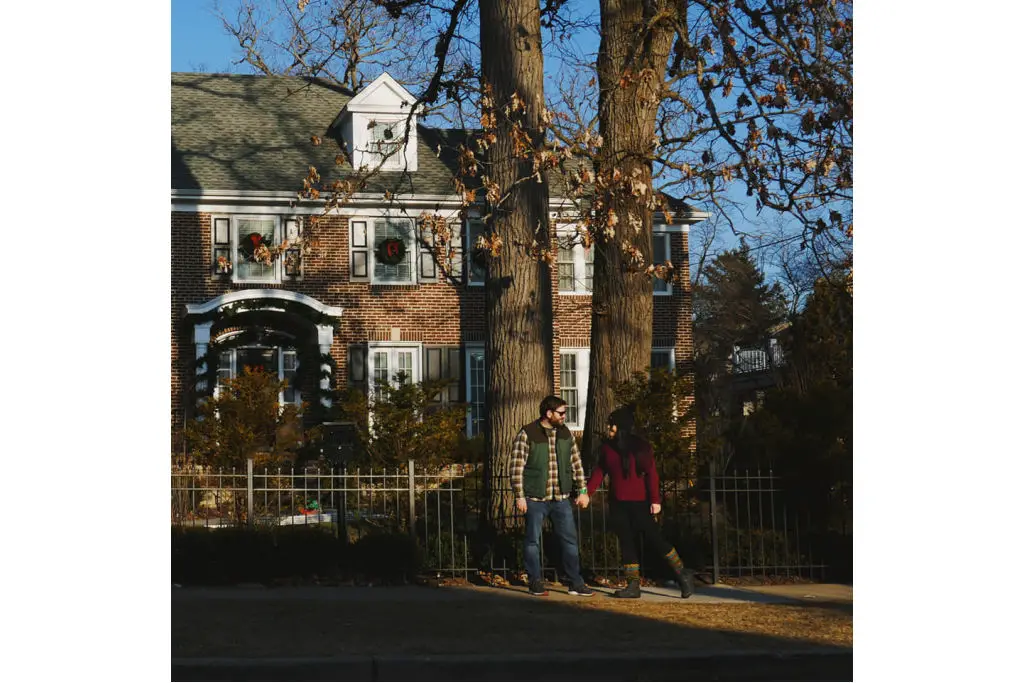
Wishing you and yours a very Merry Christmas!
We Need Your Help
Did you find this article helpful? If so, bookmark it and when you’re planning your next vacation, click on any of the links below before finalizing reservations. You’ll get the best price, we’ll earn a small commission, and you’ll help support future articles.
Thank you!
BEST TRAVEL SEARCH ENGINES
🏘️ Book Accommodation
We use Tripadvisor to compare prices and reviews in advance and check availability
✈️ Book Your Flight
To find the cheapest flight options, use Skyscanner to find the most suitable choice for you
🚗 Reserve Rental Car
Use Discover Cars to compare prices and view the largest selection of vehicles

